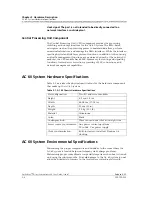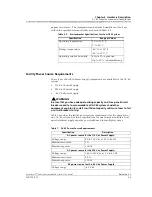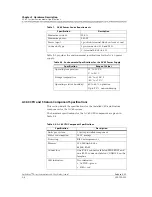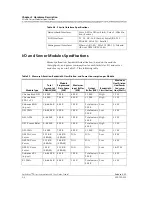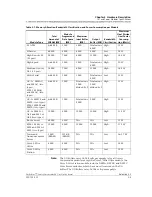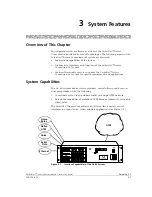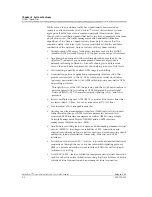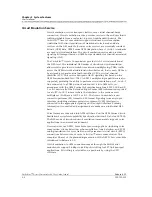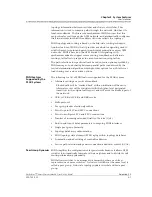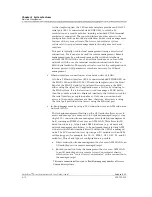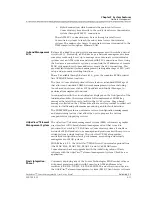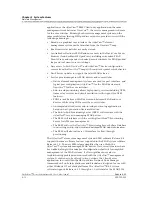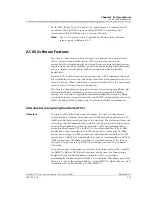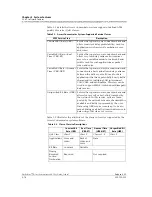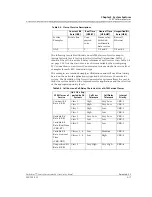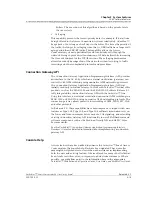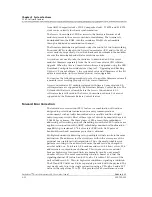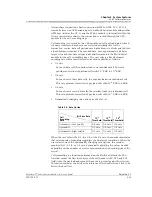
Chapter 3 System Features
User Interfaces
3-8
255-700-025
PacketStar
™
Access Concentrator 60 User Guide
, Issue 1
Release 6.3.0
PNNI allows hierarchies but does not require them. It is also possible to
deploy PNNI with one peer group encompassing all switches within a
network.
PNNI switches in the same peer group discover one another by sending hello
packets across interswitch network-to-network interface (NNI) links. After a
switch confirms that its neighbor at the other end of a link is a member of the
same peer group, both exchange PNNI topology state packets (PTSPs) to
advise and update their call routing information. PTSPs carry one or more
PTSEs, describing the resources of the originating switch and the outbound
resources of each of that switch’s attached links.
PTSEs describe attributes, such as:
~
Traffic types each link can support (any of the various ATM QoS levels)
~
Maximum cell rate the link can sustain; cell delay variation (only for
constant bit rate (CBR) and variable bit rate real-time circuits (VBRrt)
~
Cell-loss ratio or cell-loss margin (CLM), a measure of the difference
between effective bandwidth allocation and sustainable cell rate;
~
Administrative weight (AW), a parameter that allows network
architects to indicate relative link preference when deciding between
alternative routes
Switches make use of this resource information to assess which of the
available paths will best ensure QoS parameters are met.
Topology
Information
After the initial exchange of topology information among switches in a peer
group, regular broadcast topology updates are unnecessary. Each PTSE has a
finite lifetime. Since individual elements age differently, their refresh updates
occur at different times. This reduces the overhead associated with keeping
the topology of the group updated. The only time a PTSE is rebroadcast is
when there is a significant change in any of the key topology elements. For
example, any change in cell-delay performance on a link will trigger a PTSE
update from attached switches. Triggered updates further reduce network
overhead.
Every switch in a peer group is aware of the topology state of the entire
group. Thus it can build the entire call setup route from source to destination.
Of course, as peer groups grow and incorporate more nodes, the state
information in each switch increases. PNNI supports hierarchies, which
collapse the amount of state information shared by all switches.
PNNI Hierarchies
In networks that use a PNNI hierarchy, the switches at each level elect one
switch as a peer group leader (PGL). This PGL concurrently belongs to its
own level and to the next highest level, where it acts as a logical group node
(LGN) that represents and summarizes topology information needed to reach
any of the lower-level switches. The higher-level peer group can mirror this
dual constituency, electing a PGL to represent it at the next highest level.
This process may scale to over a hundred levels.
Each switch in a PNNI network has a unique 20-byte address that
corresponds to the network service access point (NSAP) schema. Much like
IP subnet addresses, NSAP identifiers have a network part and a user part.

